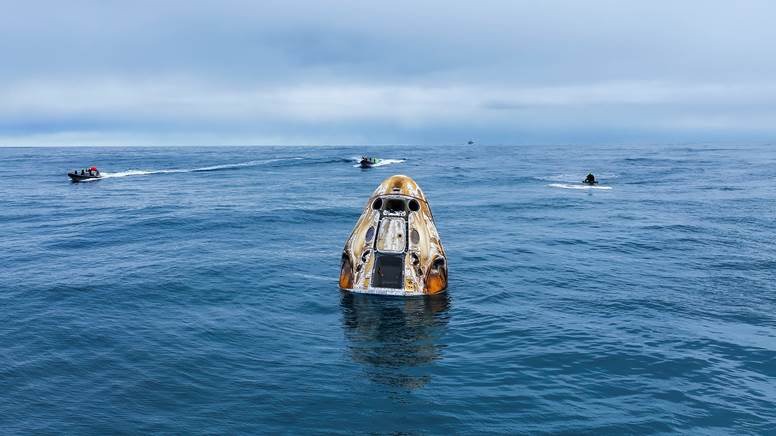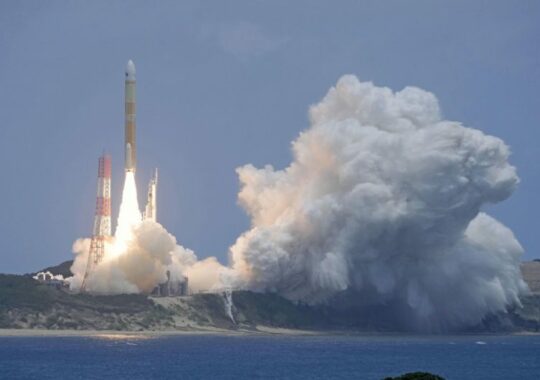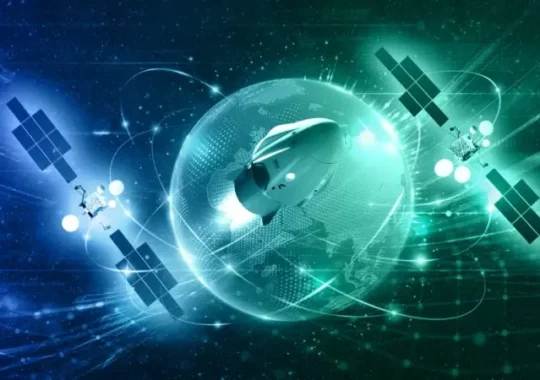On February 9, a SpaceX Crew Dragon spacecraft made a splashdown off the coast of Florida, concluding a three-week private astronaut mission to the International Space Station.
The Ax-3 mission for Axiom Space was completed when the Crew Dragon spacecraft Freedom landed at 8:30 a.m. Eastern off the coast of Daytona Beach, Florida. Everything about the spacecraft’s descent and reentry, including its deorbit burn and the deployment of its main and drogue parachutes, went according to plan.
On January 18, the Ax-3 mission took off atop a Falcon 9. Michael Lopez-Alegría, a former NASA astronaut who also commanded Ax-1 in 2022, was in charge of it. Pilot was Italian Air Force officer Walter Villadei. Serving as mission specialists were Marcus Wandt of Sweden and Alper Gezeravcı of Turkey. Wandt was the first short-term “project” astronaut for the European Space Agency. Over the course of their more than two weeks on the station, the four conducted outreach and research projects.
Wet weather caused the Ax-3 mission to be delayed by almost a week. Early on February 3, Freedom was supposed to undock from the International Space Station and splash down. But adverse weather at the splashdown locations caused the undocking to be delayed by several days. On February 7, the spacecraft left the station, beginning an extraordinarily drawn-out two-day journey back to Earth.
The third private astronaut mission to the ISS by Axiom Space came to an end with the splashdown. Prior to installing a number of commercial modules on the ISS that will eventually serve as the foundation of a stand-alone space station once the ISS is retired, the company is using the flights to gain experience in spaceflight. The upcoming Axiom mission, Ax-4, is scheduled to launch no earlier than this autumn.
The CEO of Axiom Space, Michael Suffredini, said in a statement following splashdown, “The success of these missions is an important step along our journey toward Axiom Station, underscoring our continuous efforts to expand access to low Earth orbit.”
Additionally, for ESA, it served as an example of how the organization, in collaboration with specific member nations, can facilitate innovative approaches to the transportation of European astronauts, even as the agency begins to strategize for a post-ISS future. To facilitate the flight, was in April 2023 by Axiom, ESA, and the Swedish space agency.
“With ESA, Europe can be agile and flexible and ready to join a changing human spaceflight landscape,” stated in a statement ESA Director General Josef Aschbacher, referring to Marcus’s expedited mission as an ESA project astronaut. “This mission of firsts helped us gain experience with new partners, diversified our access to space, and accelerated important science and research.”
Additionally, SpaceX launched a crewed mission this year with the Ax-3 mission. SpaceX announced during the capsule’s splashdown webcast that it is organizing five or six crewed missions for this year. This would encompass Ax-3 and Ax-4 in addition to the NASA Crew-8 mission, which is slated to depart as early as February 22, and Crew-9 in August.
Now scheduled to launch no later than this summer, Polaris Dawn is a private mission that will not visit the International Space Station. The goal of that mission, which is being funded by billionaire Jared Isaacman, the man behind the 2021 private mission Inspiration4, is to use spacesuits that SpaceX is developing to conduct the first spacewalk from a Crew Dragon spacecraft.





